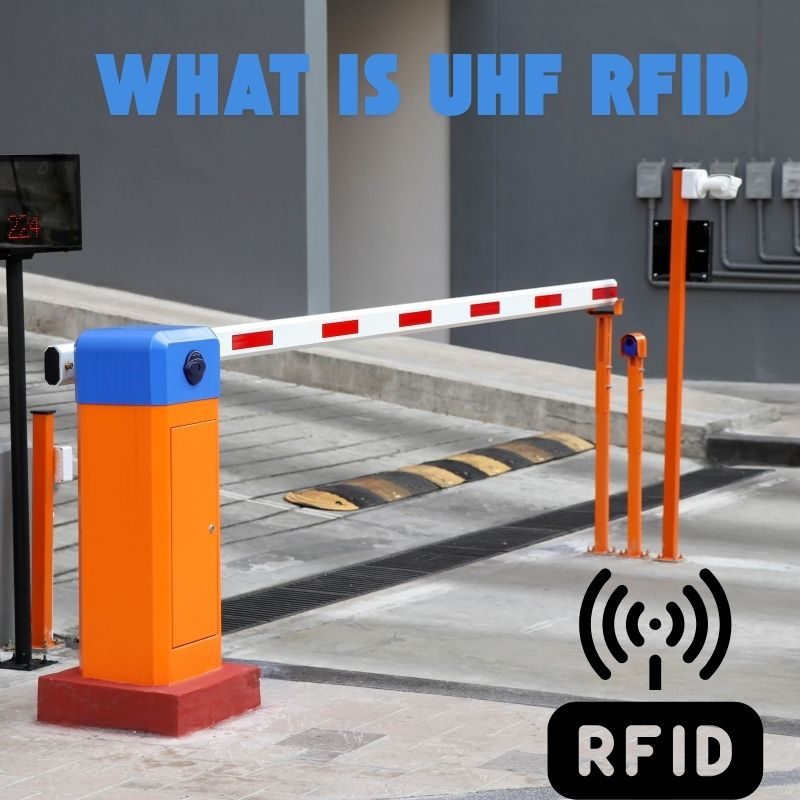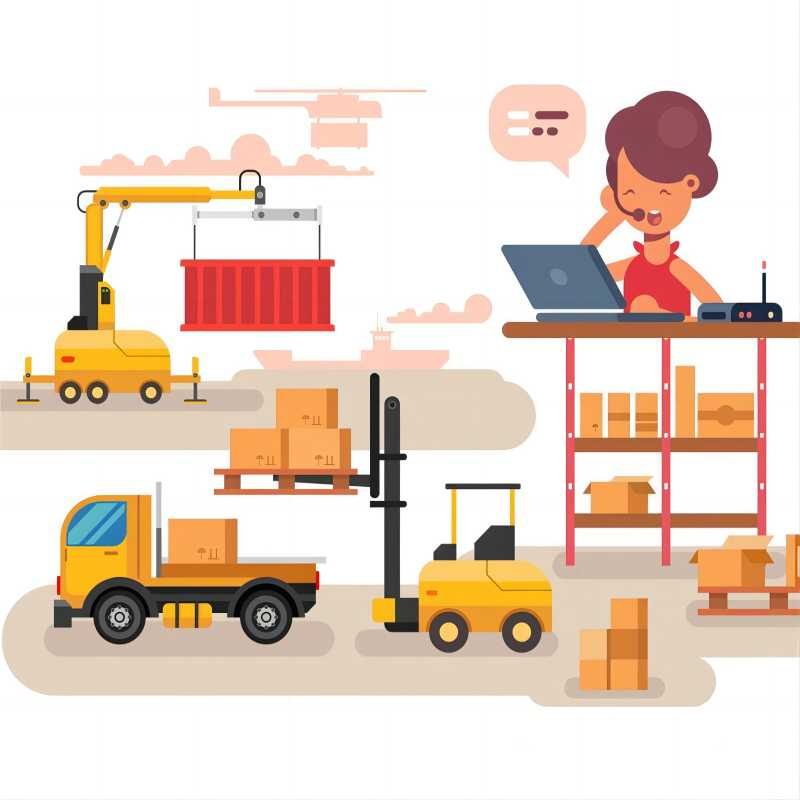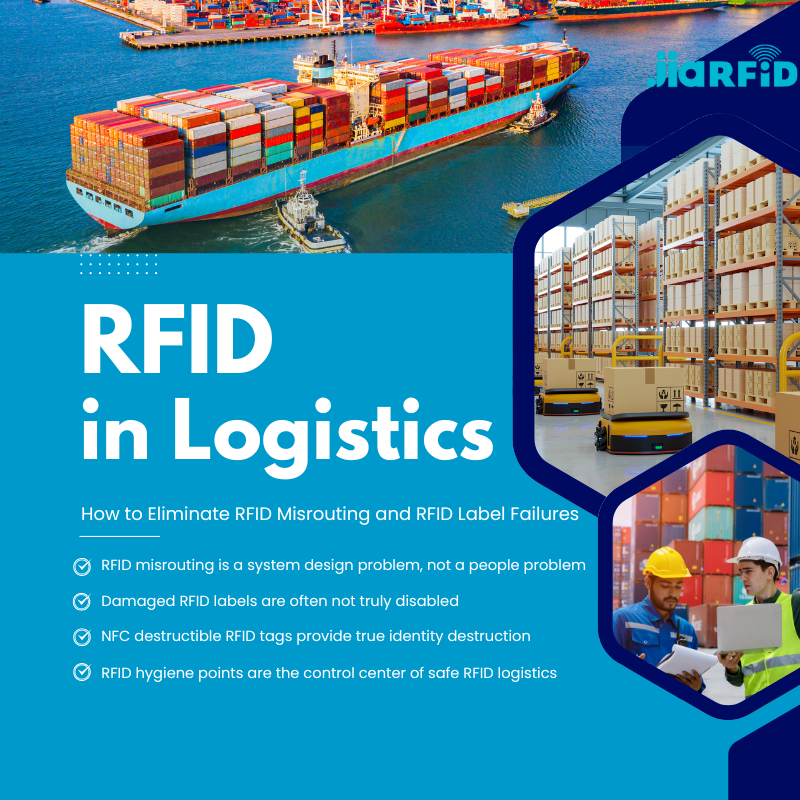
Czym jest UHF RFID?
Spis treści
Wstęp
UHF-RFID (identyfikacja radiowa o ultra wysokiej częstotliwości) to najnowocześniejsza technologia identyfikacji, która zyskuje na popularności w różnych branżach. Od handlu detalicznego i logistyki po opiekę zdrowotną i rolnictwo – jej zdolność do szybkiej, bezkontaktowej wymiany danych zmienia sposób funkcjonowania przedsiębiorstw.
Niezależnie od tego, czy dopiero zaczynasz przygodę z RFID, czy chcesz pogłębić swoją wiedzę, ten przewodnik pomoże Ci zrozumieć, czym jest ta technologia. UHF-RFID czyli jak to działa, jakie ma zastosowania i dlaczego jest to technologia, którą trzeba znać w 2025 roku.

Czym jest UHF RFID?
UHF RFID, skrót od Ultra-High Frequency Radio Frequency Identification (identyfikacja radiowa o ultra wysokiej częstotliwości), to technologia komunikacji bezprzewodowej, która wykorzystuje fale radiowe do identyfikacji i śledzenia tagów przymocowanych do obiektów. Jest to jedna z trzech głównych kategorii częstotliwości w technologii RFID — pozostałe dwie to niska częstotliwość (LF) i wysoka częstotliwość (HF).
UHF zazwyczaj działa w zakresie częstotliwości od 860 MHz do 960 MHz i jest dobrze znany z:
- Dłuższy zasięg odczytu (do 12 metrów lub więcej)
- Szybsza transmisja danych
- Możliwość czytania zbiorczego
Mówiąc prościej, technologia UHF RFID jest jak cyfrowy “kod kreskowy na sterydach” — nie wymaga linii widzenia i umożliwia natychmiastowe odczytanie setek elementów.
Jak działa UHF RFID?
Aby zrozumieć, jak działa technologia UHF RFID, przyjrzyjmy się jej podstawowym komponentom:
- Znaczniki RFID: Zawierają mikrochip i antenę, które przechowują dane.
- Czytniki RFID: Emituje fale radiowe i odbiera dane z tagów.
- Anteny: Wzmocnij sygnał między tagami a czytnikami.
- Oprogramowanie pośredniczące/oprogramowanie: Przetwarza i zarządza zebranymi danymi.
Istnieją dwa główne rodzaje Znaczniki RFID UHF:
- Pasywne tagi UHF: Wykorzystuje energię z sygnału czytnika; tańsze i powszechnie stosowane.
- Aktywne tagi UHF: Zasilany bateryjnie; odpowiedni do zastosowań dalekiego zasięgu i w czasie rzeczywistym.
Kluczowe funkcje:
- Czytnik emituje sygnał w paśmie UHF.
- Tag otrzymuje energię, włącza się i wysyła swoje dane z powrotem.
- Czytnik gromadzi te dane i wysyła je do systemu zaplecza w celu przetworzenia.
System może odczytywać wiele tagów jednocześnie, nawet przy dużych prędkościach, dzięki czemu technologia UHF RFID idealnie nadaje się do dynamicznych środowisk, takich jak przenośniki taśmowe lub szybko zmieniające się zapasy magazynowe.
Zalety technologii RFID UHF
Dlaczego technologia UHF RFID zyskuje tak dużą popularność? Ponieważ rozwiązuje rzeczywiste wyzwania związane ze śledzeniem i automatyzacją. Oto najważniejsze zalety:
- Duży zasięg odczytu: Do 12 metrów, nawet w trudnych warunkach
- Czytanie zbiorcze: Odczyt setek tagów w ciągu kilku sekund
- Efektywność kosztowa: Tagi pasywne są przystępne cenowo do zastosowań na dużą skalę.
- Widoczność w czasie rzeczywistym: Natychmiastowe aktualizacje dotyczące stanu zapasów i przemieszczania aktywów
- Poza zasięgiem wzroku: Nie ma potrzeby skanowania bezpośrednio, jak w przypadku kodów kreskowych.
- Skalowalność: Odpowiedni dla małych przedsiębiorstw lub globalnych łańcuchów dostaw
Krótko mówiąc, zwiększa wydajność, dokładność i automatyzację — kluczowe filary nowoczesnych przedsiębiorstw.
Typowe zastosowania technologii RFID UHF
Technologia UHF RFID stała się podstawową technologią w nowoczesnych systemach automatyki i śledzenia, oferując wyjątkowy zasięg, szybkość i wszechstronność. Jej zdolność do jednoczesnego odczytywania setek tagów z dużej odległości sprawia, że jest nieoceniona w wielu różnych branżach.
Sprzedaż detaliczna
- Kontrola zapasów
- Systemy antykradzieżowe
- Automatyczna realizacja transakcji
- Aktualizacje stanów magazynowych w czasie rzeczywistym
Logistyka i łańcuch dostaw
- Śledzenie przesyłki
- Zarządzanie paletami
- Operacje cross-dockingu
- Potwierdzenie dostawy
Produkcja
- Śledzenie produkcji w toku (WIP)
- Kontrola jakości
- Monitorowanie sprzętu
Opieka zdrowotna
- Opaski na rękę dla pacjentów
- Śledzenie sprzętu
- Zapasy farmaceutyczne
Rolnictwo
- Monitorowanie zwierząt gospodarskich
- Śledzenie sprzętu rolniczego
- Inteligentne systemy nawadniania
Biblioteki i edukacja
- Śledzenie książki
- Zarządzanie zasobami laboratorium
- Kontrola dostępu
Niezależnie od branży, technologia UHF RFID zapewnia widoczność w czasie rzeczywistym, wydajność i identyfikowalność.
RFID UHF a RFID HF i LF – kluczowe różnice
| Funkcja | LF (niska częstotliwość) | HF (wysoka częstotliwość) | UHF (bardzo wysoka częstotliwość) |
|---|---|---|---|
| Częstotliwość | 125-134 kHz | 13,56MHz | 860-960 MHz |
| Odczyt zakresu | ~10cm | ~1 m | Do 12 m |
| Prędkość transmisji danych | Powolny | Umiarkowany | Szybko |
| Koszt | Niski | Umiarkowany | Różne |
| Przykłady zastosowań | Śledzenie zwierząt | Płatności bezstykowe | Łańcuch dostaw, handel detaliczny, logistyka |
Technologia UHF RFID oferuje najdłuższy zasięg odczytu i najwyższą wydajność, dzięki czemu idealnie nadaje się do zastosowań w dynamicznych środowiskach i do śledzenia dużych ilości produktów.
Normy i przepisy dotyczące technologii RFID UHF
Normy regulują globalne stosowanie technologii RFID UHF w celu zapewnienia kompatybilności:
- EPCglobal Gen2 / ISO 18000-6C: Standard branżowy dla pasywnych tagów RFID UHF
- FCC (USA): Działa w paśmie 902–928 MHz
- ETSI (Europa): Działa w paśmie 865–868 MHz
- Inne regiony: Różnią się nieznacznie w zależności od przepisów dotyczących telekomunikacji.
Podczas wdrażania technologii UHF RFID na całym świecie należy koniecznie zapewnić zgodność z regionalnymi przepisami dotyczącymi częstotliwości.
Rodzaje tagów RFID UHF
Pasywne tagi RFID UHF
- Najczęściej spotykane
- Opłacalny
- Wykorzystywane w handlu detalicznym, logistyce itp.
Aktywne tagi RFID UHF
- Zasilany bateryjnie
- Większy zasięg
- Wykorzystywane do śledzenia aktywów o wysokiej wartości
Tagi półpasywne (BAP)
- Wspomaganie bateryjne dla lepszej wydajności
Formy tagów
- Wkłady
- Etykiety
- Twarde tagi
- Wytrzymałe tagi do metalu lub trudnych warunków
Wybierz typ tagu w oparciu o swoje środowisko, wymagania dotyczące zasięgu i budżet.
Wyzwania i ograniczenia technologii RFID UHF
Jak każda technologia, RFID UHF nie jest idealna. Oto, co należy wziąć pod uwagę:
- Zakłócenia spowodowane metalem i cieczą: Może blokować lub zakłócać sygnały
- Czynniki środowiskowe: Ekstremalne temperatury mogą wpływać na wydajność
- Ograniczenia linii widzenia: Tagi w gęstych stosach mogą nie być odczytywane w sposób niezawodny.
- Koszt początkowy: Konfiguracja infrastruktury może być kosztowna.
- Przeciążenie danymi: Wymaga solidnego oprogramowania do obsługi gromadzenia danych na dużą skalę.
Jednak dzięki starannemu planowaniu ograniczenia te można zminimalizować lub całkowicie wyeliminować.

Przyszłe trendy w technologii RFID UHF (2025 i później)
Technologia UHF RFID nie tylko pozostanie z nami na dłużej — ale także szybko się rozwija. Trendy obejmują:
- Integracja z IoT: Inteligentne czujniki + RFID = potężne możliwości analizy danych
- Systemy RFID oparte na chmurze: Zarządzaj tagami z dowolnego miejsca
- Sztuczna inteligencja i uczenie maszynowe: Analiza predykcyjna z wykorzystaniem danych RFID
- Inteligentne miasta i infrastruktura: Płynność ruchu, gospodarka odpadami i nie tylko
- Przemysł 4.0: Automatyzacja fabryk w czasie rzeczywistym i cyfrowe bliźniaki
Dzięki niższym kosztom i lepszej wydajności można spodziewać się masowego wdrożenia tej technologii w różnych branżach do końca dekady.
Czy technologia RFID UHF jest odpowiednia dla Ciebie?
UHF RFID to potężna, skalowalna technologia, która może pomóc Twojej firmie ograniczyć procesy ręczne, zmniejszyć straty i poprawić widoczność. Niezależnie od tego, czy zarządzasz magazynem, czy śledzisz drogie urządzenia medyczne, korzyści płynące z dalekiego zasięgu i szybkiego przechwytywania danych mają ogromne znaczenie.
Jednak, podobnie jak w przypadku wszystkich technologii, sukces polega na zrozumieniu jej mocnych stron i prawidłowym wdrożeniu.
Chcesz dowiedzieć się więcej o technologii UHF RFID dla swojej firmy? Zacznij od konsultacji z zaufany dostawca rozwiązań RFID lub przeprowadzenie programu pilotażowego w celu oceny potrzeb.
Najczęściej zadawane pytania dotyczące technologii UHF RFID
Co oznacza skrót UHF RFID?
UHF RFID to skrót od Ultra-High Frequency Radio Frequency Identification (identyfikacja radiowa o ultra wysokiej częstotliwości). Odnosi się do systemów RFID, które działają w zakresie częstotliwości 860–960 MHz i są w stanie odczytywać tagi z odległości kilku metrów.
Jak działa technologia UHF RFID?
Systemy RFID UHF wykorzystują fale radiowe do komunikacji między czytnikiem a tagiem. Czytnik wysyła sygnał, który zasila tagi pasywne, które następnie wysyłają swoje dane z powrotem do czytnika. Umożliwia to szybką, bezprzewodową identyfikację obiektów bez konieczności bezpośredniej linii widzenia.
Jaki jest zasięg systemu RFID UHF?
Systemy RFID UHF mają zazwyczaj zasięg odczytu od 3 do 12 metrów (10 do 40 stóp) dla tagów pasywnych. Tagi aktywne z bateriami mogą znacznie zwiększyć zasięg, czasami nawet do 100 metrów lub więcej.

Ray Zhou
Ten artykuł został napisany przez Raya Zhou, eksperta w dziedzinie technologii RFID z ponad 10-letnim doświadczeniem w branży.
Uwagi
Gorące produkty

RFID w logistyce: jak wyeliminować błędne trasy RFID i awarie etykiet RFID
RFID w logistyce to coś więcej niż tylko narzędzie przyspieszające procesy. Stało się ono kluczowym elementem funkcjonowania nowoczesnych łańcuchów dostaw.

Czym jest zarządzanie odpadami za pomocą technologii RFID
Wyobraź sobie miasto, w którym każdy kosz na śmieci „mówi” – nie dosłownie, ale za pomocą niewielkiego chipa, który informuje system, kiedy jest pełny, kiedy został opróżniony i gdzie trafiły śmieci. Tak właśnie działa obecnie system zarządzania odpadami oparty na technologii RFID.

Czym są uszczelnienia śrub i jakie są ich zastosowania? | Kompletny przewodnik
W globalnym handlu i logistyce plomby odgrywają kluczową rolę w zapewnianiu bezpieczeństwa i zgodności ładunków. Te małe, ale potężne urządzenia są przeznaczone do blokowania kontenerów transportowych, przyczep i drzwi ładunkowych za pomocą mechanizmu zabezpieczającego przed manipulacją.

Czym jest ochraniacz karty RFID? Korzyści, przypadki użycia i przewodnik zakupu
Technologia RFID (Radio Frequency Identification) jest wszędzie: w kartach kredytowych, identyfikatorach, przepustkach, kluczach do pokoi hotelowych i nie tylko. Oferuje szybkość i wygodę, ale otwiera również drzwi do nowego rodzaju kradzieży cyfrowej zwanej "skimmingiem". W tym miejscu pojawia się ochrona kart RFID.

Opaski RFID na rękę na imprezy: Przewodnik zakupów hurtowych dla organizatorów
Opaski RFID na nadgarstki na imprezy stają się rozwiązaniem dla organizatorów, którzy potrzebują szybszego wejścia, zapobiegania oszustwom i płatności bezgotówkowych na koncertach, festiwalach i obiektach sportowych. W przeciwieństwie do biletów papierowych lub kodów QR, te inteligentne opaski na rękę wykorzystują wbudowane chipy, aby usprawnić dostęp, zabezpieczyć transakcje i poprawić wrażenia gości.

Jak znacznik RFID na przedniej szybie usprawnia kontrolę dostępu do pojazdu i systemy poboru opłat drogowych
W dzisiejszym szybko zmieniającym się świecie identyfikacja pojazdów musi być szybka, bezpieczna i bezdotykowa. Znacznik RFID na przedniej szybie zapewnia właśnie to - niezawodny sposób zarządzania poborem opłat, parkowaniem i dostępem do bramek bez zatrzymywania pojazdów.
Tagi
POWIĄZANE BLOGI

RFID w logistyce: jak wyeliminować błędne trasy RFID i awarie etykiet RFID
RFID w logistyce to coś więcej niż tylko narzędzie przyspieszające procesy. Stało się ono kluczowym elementem funkcjonowania nowoczesnych łańcuchów dostaw.

Czym jest zarządzanie odpadami za pomocą technologii RFID
Wyobraź sobie miasto, w którym każdy kosz na śmieci „mówi” – nie dosłownie, ale za pomocą niewielkiego chipa, który informuje system, kiedy jest pełny, kiedy został opróżniony i gdzie trafiły śmieci. Tak właśnie działa obecnie system zarządzania odpadami oparty na technologii RFID.

Czym są uszczelnienia śrub i jakie są ich zastosowania? | Kompletny przewodnik
W globalnym handlu i logistyce plomby odgrywają kluczową rolę w zapewnianiu bezpieczeństwa i zgodności ładunków. Te małe, ale potężne urządzenia są przeznaczone do blokowania kontenerów transportowych, przyczep i drzwi ładunkowych za pomocą mechanizmu zabezpieczającego przed manipulacją.




